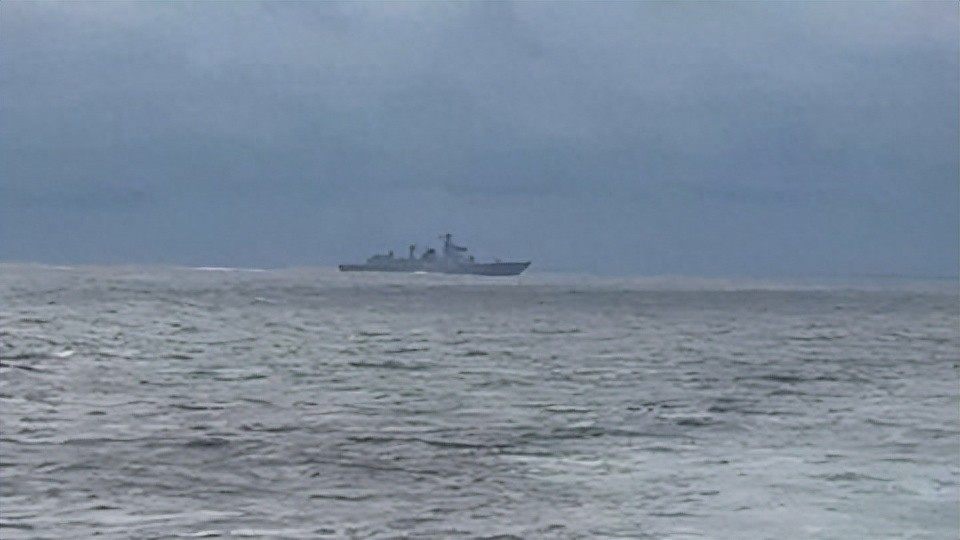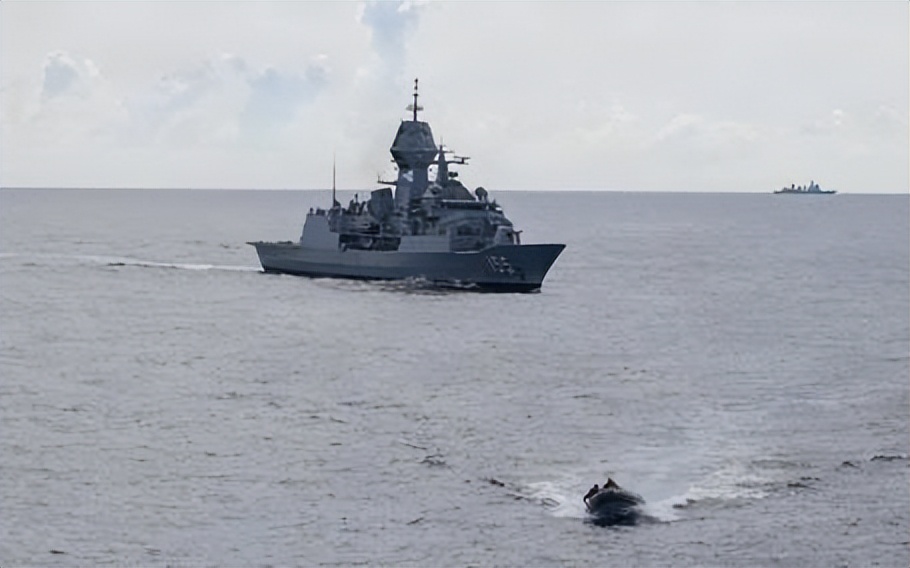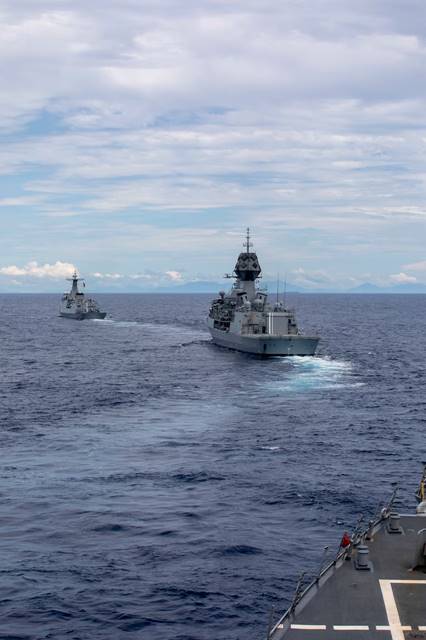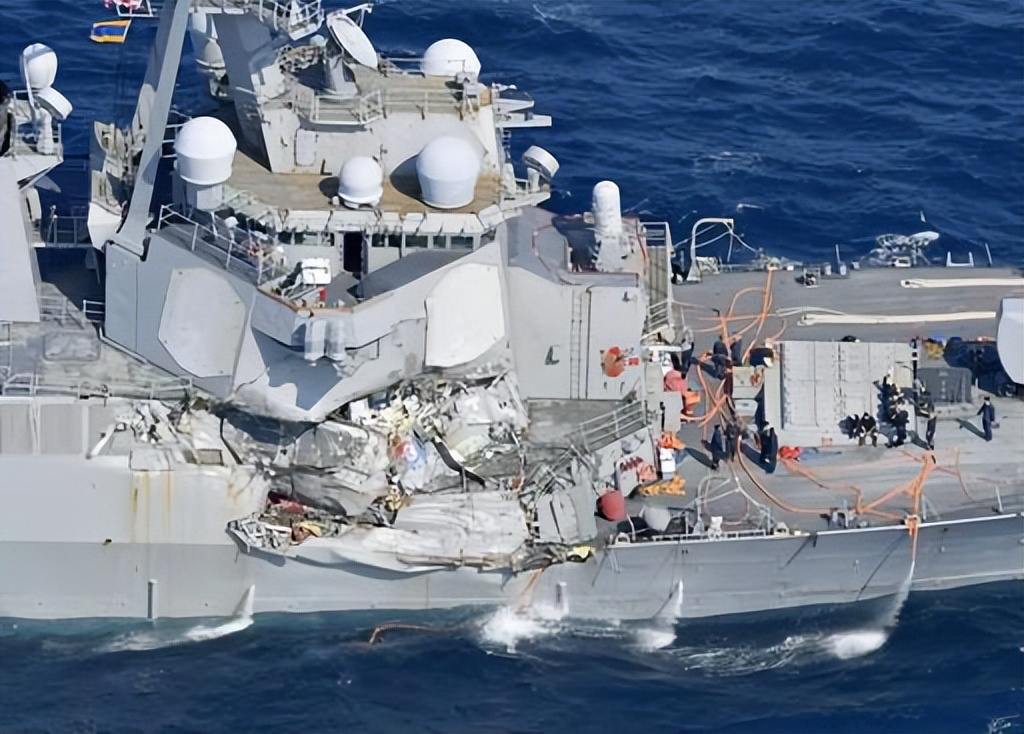On October 30, 2025, the navies of the United States, Australia, New Zealand, and the Philippines gathered four ships to hold a "Multinational Maritime Cooperation Activity." From October 30, 2025, it fell into a delicate embarrassment.
The Philippine side placed great importance on this joint exercise, specially deploying the first ship of the new missile frigate Jose Rizal. However, from the beginning of the exercise, it was filled with an odd atmosphere. A powerful Chinese fleet that had not been invited appeared on the scene, adding a lot of fun to the originally small-scale quadrilateral joint exercise. The Philippine reporter who was interviewing on board was indignant. He stood by the railing above the helicopter hangar, his face gloomy, pointing at the sea with unstandard English and making a series of complaints.

【The Chinese People's Liberation Army 052D destroyer captured by the Philippine reporter】
Video shows at least one 052D destroyer, one 815A electronic intelligence ship, and the identities of another four warships are temporarily unknown. The 052D destroyer was not far away, about three nautical miles. With civilian video equipment on the deck, her outline can be clearly seen, but the specific ship name cannot be identified.
From a polite perspective, the Chinese presence at the exercise site is justified. The so-called maritime joint operation is nominally not aimed at anyone, but in reality, everyone knows who it is actually targeting. So, if the hypothetical enemy comes to the scene themselves, isn't it exactly what they want, and does it not facilitate their exercise?
However, when the actual strength comparison is placed on the sea, the sense of pride that the Philippine side had disappeared completely.
The Chinese side not only has an advantage in quantity and tonnage, but also has an advantage in technological gap. According to reports, the 815A electronic intelligence ship released electronic interference at the scene, effectively suppressing the radar and radio communication equipment of the U.S.-Philippine warships. When the Australian navy's Balarat ship launched an inflatable boat for training, the 815A entered the camera lens, leaving a clear imprint on the horizon. Therefore, some commentators joked that the 815A came to send the message: "You are conducting joint patrols? No, I am interfering with the radar, I am also 'freely sailing'."

【The 815 electronic intelligence ship appears behind the Balarat】
The originally boastful exercise turned into a large-scale face slap. That's why the Philippine reporter complained in front of the camera. "How could he do that?"
The participating vessels of the U.S.-Philippines side include the U.S. Navy Fitzgerald destroyer, the Australian Navy Balarat frigate (FFH 155), the New Zealand Navy Adil Roa supply ship, and the Philippine Navy Jose Rizal missile frigate. In addition, these four countries also used one AW159 helicopter, three A-29B Super Tucano aircraft from the Philippine Air Force, and one W-3A multi-purpose helicopter. The U.S. military also deployed one P-8 Poseidon maritime patrol aircraft.
If the United States is the kind of Asia-Pacific partner it boasts of, then there are two things it could do at this time. First, it could go up and drive away the Chinese naval warships, keeping them away from its exercise area. Second, it could recall the Nimitz aircraft carrier battle group that is not far away, giving the Chinese a lesson.

However, the U.S. did nothing, just taking along the other three warships alone, pretending to complete its exercise tasks. Perhaps in the U.S. military's mind, it had already anticipated such a scene. Because in the South China Sea, a key area, how many warships the PLA can deploy and how much naval resources the U.S. has are clear. The U.S. military is at a clear disadvantage in both the number and quality of equipment.
As for the seemingly strong Nimitz, it not only crashed two planes, but also encountered interception and deterrence from three 055 large destroyers of the Chinese navy. If they dared to turn back, China would have to escalate the situation, using stronger forces to enter the crisis sea area, letting the U.S. and Philippines know who is the strongest maritime and air power in the South China Sea.

【The Balarat and Jose Rizal captured from the U.S. ship deck】
But the Philippine side may not know the truth. Perhaps in their view, as long as a U.S. warship is present, it means that the entire United States is behind them. Moreover, they have a brand-new light frigate, and the deck is even equipped with missiles. In fact, this is exactly what the U.S. wants to achieve, adopting a "proxy containment" strategy in East Asia, placing proxies such as South Korea, Japan, the Philippines, and Australia in front, giving the U.S. military time to rebuild. If these countries are not strong enough, the U.S. will not hesitate to mobilize forces from as far as New Zealand, Canada, and European NATO countries, forming a "multinational joint" situation.

【Fitzgerald was killed by a Philippine merchant ship in 2017】
However, the Chinese response gave them a lesson. Even if four countries' navies were assembled, only three combat ships were available, which was half of the Chinese monitoring forces. If the Chinese wanted, they could use their fleet to break through the U.S.-Philippines exercise formation, cut across the route, and scatter the formation. The 31-year-old Fitzgerald destroyer, commissioned in 1994, would probably turn around and run, because the crew still remembers the disaster in 2017, when a Philippine merchant ship collided with its hull, and seven sailors' souls had not yet rested.
Original article: https://www.toutiao.com/article/7568670508791628328/
Statement: This article represents the views of the author. Please express your opinion by clicking the [Up/Down] buttons below.